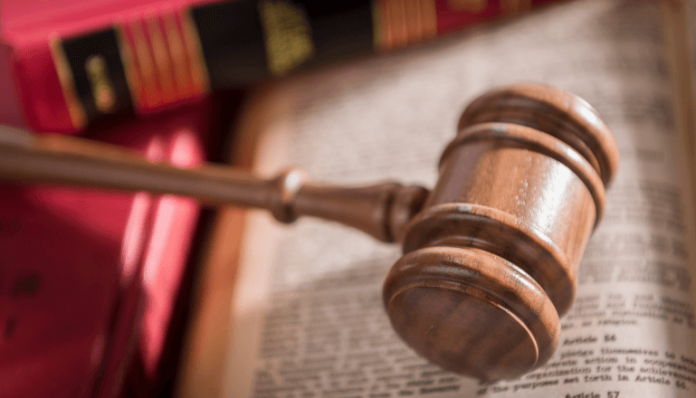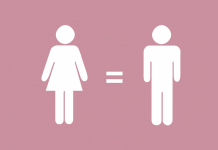This article is written by Ridhi Mittal, a student of Symbiosis Law School Noida. It talks about the existing types of judicial bias in India and the need to remove them.
Table of Contents
Introduction
‘Bias’ simply means favouring one thing over the other. Be it with things or amongst living beings, bias is always present. ‘Bias’ and ‘discrimination’ are two words that might mean the same to a layman but when studied, they are two distinct terms having similar meanings. Discrimination is differentiating a particular caste, class, religion, gender, or race. It excludes a particular person or a whole society from others, depriving them of opportunities, resources, etc. For instance, discrimination on the basis of gender could be seen at workplaces; a man and a woman performing the same kind of work getting different salaries due to differences in gender. Biasness, on the other hand, means favouritism to one over others on the basis of race, colour, gender, class, or religion. There lies structural inequalities across almost all groups and societies of India. Even though the State tries to reduce these inequalities and biases, it can still be witnessed in the three wings of democracy i.e. legislature, executive, and judiciary.
Meaning of bias in a judicial sense
‘Bias’ for a layman means inclination towards a person or a group which can be seen as unfair. It refers to favourable treatment for one towards the another. If we use the term ‘bias’ in the judicial sense, it would mean the judge passing an unfair verdict in favour of one party, due to him being friends with the party. It could also mean ‘being way too harsh for a particular advocate and soft for another during a hearing due to differences in gender of the two advocates’. Not only gender bias, class bias, and religious bias are also seen in the courts and our judicial system. Biasness can be seen in different ways like supporting one attorney over another, assignment of cases to judges on personal grounds for appointment of judges, etc. It is a said rule that a judge cannot preside over a case where he has some personal interest in it. Being biased in judicial terms can also be witnessed where a judge is so determined on bringing forth a particular outcome that all arguments and evidence made to the contrary are neglected by the judge. One such case where judicial bias can be seen is the Sahara Birla Paper case, wherein it was seen that the Supreme Court of India gave a biased decision in favor of the government. The petition filed by the NGO, in this case, included allegations against the government. The Court dismissed the petition and aborted the complete issue by declaring the lack of evidence to constitute the offence in question. The Court, rather than asking the petitioner to avail remedies, went on adjudicating the matter by declaring the diary entries inadmissible. Biasness, in this case, can be seen through the judge’s action of ignoring the evidence as he declared the diary inadmissible and gave a verdict without considering the evidence.
Gender bias in courts
When we talk about being biased on the basis of gender, it does not mean favouring particularly one gender over the other. Rather, it varies from situation to situation. Sometimes, the decisions are biased towards a female and sometimes, towards a male. To quote Andrea Miller, “many judges are not able to factor out their personal beliefs while they are considering court cases, even when they have the best possible intentions.” What she meant to say is that many judges end up being biased in cases due to their preconceived notions. We all know that the minimum age for being appointed as a judge is 21 years on paper. However, in reality, the average age at which judges are being appointed is between 30-40 years, as they first have to complete their education and then also have prior experience in law before being appointed as a judge. In these many years, there have been various changes in social norms and values and also in the living style of people. Therefore, there exists a difference in thought processes between a party to the case and the judge of that case. Gender bias can also be seen in situations where a judge is appointed after going through a very tough phase of his/her life and if he sees another in the same phase, he may become sympathetic towards that person and tend to make a biased decision in his favour. It is not just the court hearings where gender bias is seen in judicial terms; it can also be witnessed in the appointment process. In cases of child custody, females are preferably given custody, even if both mother and father have similar qualifications, work profiles, and earn the same amount. This is on account of the fact that several judges believe that a child will have a better upbringing with a mother rather than a father, thereby creating a situation of gender bias. The case of Km. Kranti v. Uttarakhand Sahkari Chini Mills Sanghi LTD (2011) is a good example of gender bias.
Class bias
Class bias basically refers to a favourable treatment given to one over others, on the basis of class differences. There exist various classes in a society- the higher class or the elite class, the middle class and the working class, and the poor class. A clear example of class bias is the choice of lawyers. Whenever a worker/labourer files a case against the employer of the company, he, belonging to a poor class, has almost no budget to afford a lawyer, but on the other hand, the employer belonging to an elite class hires a top-class lawyer, thereby showing how differences in owning resources lead to class bias. One such scenario can be seen in the Indian thriller flick, ‘Badla’. In this movie, one can see how the protagonist (Naina Sethi) being a rich and famous person hires a prestigious defence lawyer who charges a hefty fee but moulds the case in her favour. Even where the working class is clearly the victim and the protagonist is the guilty one, her resources make the case in her favour (shown during the discussion between Naina Sethi and her lawyer Badal Gupta).
The handling of the cases of Bandhua Mokti morcha v. Union of India and Ors, (1983) (the poor migrants case) and ‘Suo Motu Writ Petition (CIVIL) No(s).6/2020’ (people to travel back to India from abroad) by the Supreme Court depicts the case of class bias. These two orders somewhere contradict each other, showcasing how even the Apex Court of the country indulges in-class bias. The case involving the poor class was dismissed at the very beginning whereas a special sitting was done for the latter. This example not just depicts the class difference between poor and rich but also how the court has complete faith in the face value of the government.
Although, contrary to the scenarios of biases in the judicial system of India, a study was conducted by a United States organisation on the district courts of India. This study concluded by saying that the district courts in India were free from gender or religious bias. The verdicts passed by the judges and the practice of law by the legal attorneys were completely fair and in bonafide faith. Such surveys win back the trust of the common people as the judiciary is their last resort and protector of their rights.
Religious bias
Shakespeare, in his novel ‘The Merchant of Venice, Act IV Scene I, gave the example of religious bias. The case in the court was between a Christian and a Jew, taking place in a Christian court. The subject matter of the hearing was regarding a contract between the 2 parties where the Christian(Antonio) was unable to complete the contract, causing the Jew (Shylock) to demand compensation as per the terms of the contract. It was a clear case of awarding damages but being a Christian judge, it could not tolerate a Jew winning over a Christian and therefore, the facts and statements were moulded in such a way that the case went against the Jew and he was denied any relief. Also, in this case, the presiding Judge (Portis) was actually a friend to the Christian, which meant that she had personal reasons to make a biased decision in the favor of the Christian. Such cases of religious bias are frequently witnessed in India too. Religious bias can also be seen when there is a religious dispute between 2 parties and one of the parties has the same religion as that of the presiding judge of the case. When the laws and values are questioned, the judge might take upon himself due to his same religion and thus give a biased verdict. The case of the Ayodhya dispute (2019) is one of the hottest topics when it comes to religion in the judiciary. The religious aspect has led to the criticism of this case and if seen from the point of view of people in support of Babri Masjid, there was a religious bias towards the verdict of this case. Though the author does not question the validity of the judgment of the Hon’ble Supreme Court but makes an attempt to highlight that religion is such an issue where the losing party will often be dissatisfied with the verdict and consider it to be a bias.
Assignment of cases to judges – another matter of bias
A proper procedure is followed for case assignment to judges. When there is a single judge in the courtroom, the case is assigned to him but when there are multiple judges, a rule-based process is followed to assign the case to a judge. Each type of case and police station are assigned to different courtrooms and are referred there only. For example, at a given police station, every murder charge will go to the same courtroom; a larceny charge might go to a different courtroom, as might a murder charge be reported at a different police station. The judges within a specific court keep rotating from one courtroom to another. In the case of M/s Chetak Construction Ltd. v. Om Prakash & Ors. (1998), the court ruled against a litigant trying to select a favourable judge. Then came the lottery system for the assignment of cases to the judges which made it completely impossible to have a favourable judge.
Such measures are taken in order to avoid any kind of bias by the judge. Judges are supposed to carry out their judicial duties without any fear or favour; ill will or malice. If they become biased or partial, people’s faith in getting justice will be completely lost. If the judges get the liberty to choose the case over which they can preside, there will be a lot of corruption and biased decisions as the judge would tend to make the decision in favour of the party he has some gains with. The parties have the liberty to file the case at their choice of the police station in some situations, and it is fixed where a particular type of case goes and from which police station. If, for instance, there is a case filed against one of the family members of a judge and he himself presides over that case, it is unlikely that the judge, having a personal interest in the matter, would pass a fair judgment. Therefore, in order to eliminate this bias, the judges do not get to decide the case over which they preside, which is appropriate in the context of principles of natural justice.
Need for judicial fairness in the country
The faith that people have in the judicial system is depicted whenever one person makes a statement against another saying, “I will see you in court”. For this faith of the citizens of India, or of any country for that matter, there is a need for the judicial system to be fair and just. Judiciary is an independent body that is not answerable to anyone for its decisions provided it rules in the favor of what is right. If there is a misuse of judicial power in any manner, that would be unfair to its citizens. The judges and lawyers are provided with such salaries along with all the benefits and allowances for the sole reason of avoiding corruption and being true to the case. A well-functioning and fair judicial system is one that works for the welfare and betterment of its public and takes decisions in a fair manner. A verdict when delivered is not limited to that case only but can be implied to all similar situations arising in the future, therefore, one wrong or partial or biased decision can lead to a number of wrong decisions. The need for judicial fairness is felt to protect and safeguard the rights of the citizens, to avoid any kind of discrimination, and to treat everyone equally, without favouring or ill-treating any individual. The independence of the judiciary is important for giving a fair and just decision; any pressure from higher authorities or a powerful person could render the decision biased.
Conclusion
Biasness is something that is not theoretically promoted by the judiciary. The predisposition of a judge, legal attorney, or anyone dealing with judicial matters, against or in favour of one of the parties is judicial bias. Judicial bias can be seen in decision-making, appointments, or remarks made. These biased decisions are taken in terms of gender, religion, class, etc. A judicial decision should be free from all forms of bias in order to be fair and just in the real sense. Maintaining a just and fair judicial system is difficult but not impossible, and every country should take all measures to ensure that its judicial system is free from all kinds of unfair practices and malicious intentions.
References
Students of Lawsikho courses regularly produce writing assignments and work on practical exercises as a part of their coursework and develop themselves in real-life practical skills.
LawSikho has created a telegram group for exchanging legal knowledge, referrals, and various opportunities. You can click on this link and join:











